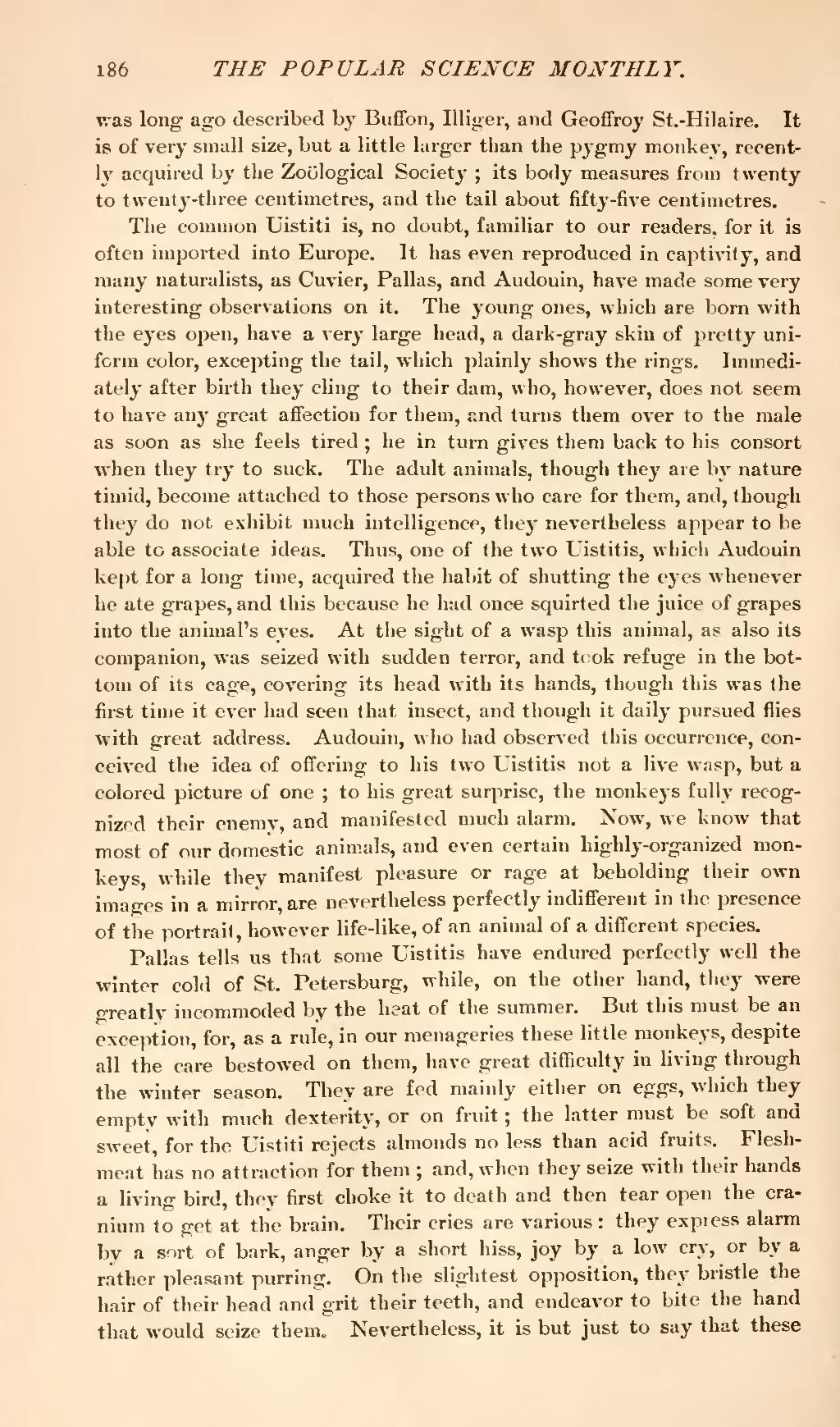was long ago described by Buffon, Illiger, and Geoffroy St.-Hilaire. It is of very small size, but a little larger than the pygmy monkey, recently acquired by the Zoölogical Society; its body measures from twenty to twenty-three centimetres, and the tail about fifty-five centimetres.
The common Uistiti is, no doubt, familiar to our readers, for it is often imported into Europe. It has even reproduced in captivity, and many naturalists, as Cuvier, Pallas, and Audouin, have made some very interesting observations on it. The young ones, which are born with the eyes open, have a very large head, a dark-gray skin of pretty uniform color, excepting the tail, which plainly shows the rings. Immediately after birth they cling to their dam, who, however, does not seem to have any great affection for them, and turns them over to the male as soon as she feels tired; he in turn gives them back to his consort when they try to suck. The adult animals, though they are by nature timid, become attached to those persons who care for them, and, though they do not exhibit much intelligence, they nevertheless appear to be able to associate ideas. Thus, one of the two Uistitis, which Audouin kept for a long time, acquired the habit of shutting the eyes whenever he ate grapes, and this because he had once squirted the juice of grapes into the animal's eyes. At the sight of a wasp this animal, as also its companion, was seized with sudden terror, and took refuge in the bottom of its cage, covering its head with its hands, though this was the first time it ever had seen that insect, and though it daily pursued flies with great address. Audouin, who had observed this occurrence, conceived the idea of offering to his two Uistitis not a live wasp, but a colored picture of one; to his great surprise, the monkeys fully recognized their enemy and manifested much alarm. Now, we know that most of our domestic animals, and even certain highly-organized monkeys, while they manifest pleasure or rage at beholding their own images in a mirror, are nevertheless perfectly indifferent in the presence of the portrait, however life-like, of an animal of a different species.
Pallas tells us that some Uistitis have endured perfectly well the winter cold of St. Petersburg, while, on the other hand, they were greatly incommoded by the heat of the summer. But this must be an exception, for, as a rule, in our menageries these little monkeys, despite all the care bestowed on them, have great difficulty in living through the winter season. They are fed mainly either on eggs, which they empty with much dexterity, or on fruit; the latter must be soft and sweet, for the Uistiti rejects almonds no less than acid fruits. Flesh meat has no attraction for them; and, when they seize with their hands a living bird, they first choke it to death and then tear open the cranium to get at the brain. Their cries are various: they express alarm by a sort of bark, anger by a short hiss, joy by a low cry, or by a rather pleasant purring. On the slightest opposition, they bristle the hair of their head and grit their teeth, and endeavor to bite the hand that would seize them. Nevertheless, it is but just to say that these
